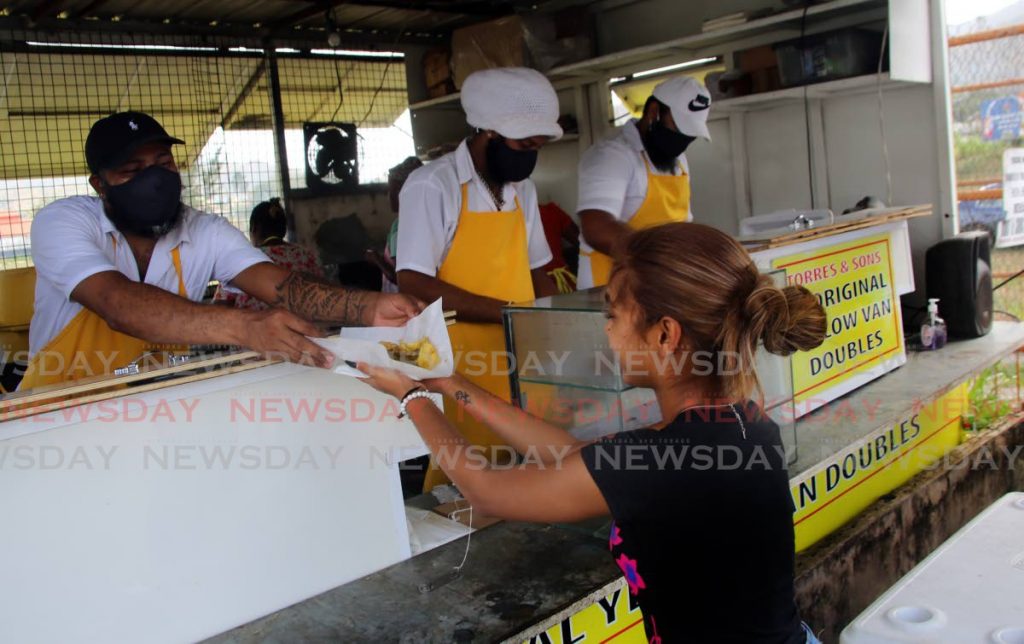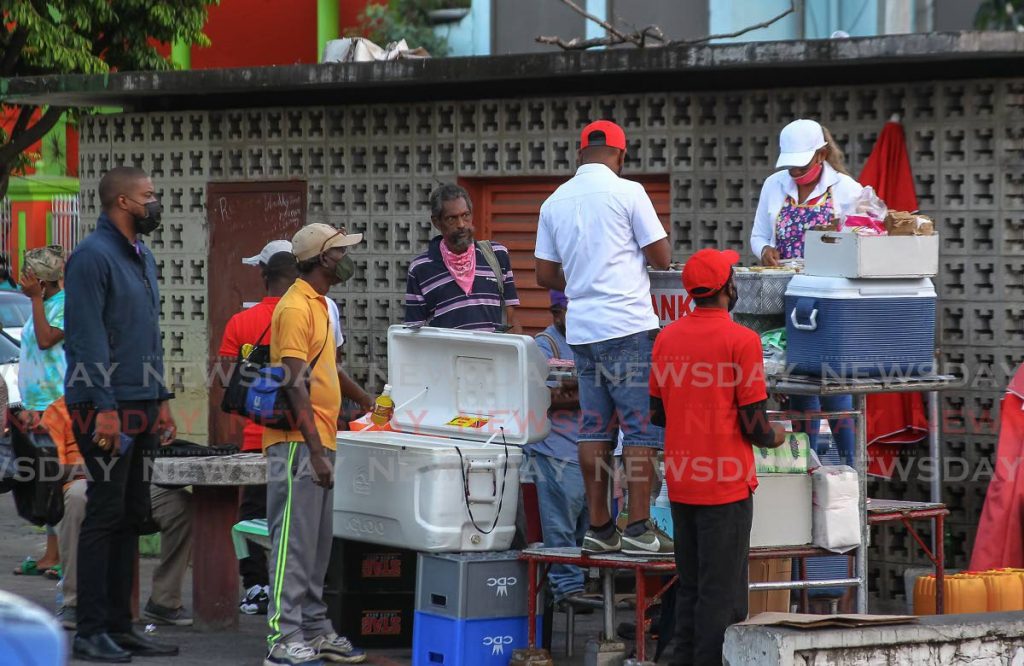What it takes to make doubles a national dish

QUINCY ROSS
It’s been just about three weeks since the morning I woke up and found my Facebook feed smothered in some saucy trolling directed at Minister of Agriculture, Land, and Fisheries Clarence Rambharat. Yet, every walk past a doubles box still triggers some sort of post traumatic doubles disorder.
At a Point Fortin Borough Corporation event the minister did one of the top five most dangerous things to do in close range of the Trini public: he said some not so favourable things about doubles. In any context, that was a belly move. From harshly worded status updates to a local celebrity in semi-formal threads dining at his favourite doubles vendor in celebration and adoration, the public made their position on doubles as a national dish clear. The minister suggested that there is no need to put doubles in the realm of national breakfast, lunch or dinner because the ingredients are all imported. Like a bite of bara and channa with five times more roast pepper than was ordered, the minister’s suggestion was hard for most to swallow. And to put the chutney on top, he went on to express his displeasure at the DIY doubles period of the covid19 lockdown, in which almost every citizen with an internet connection and a link to Bridgette Joseph’s doubles recipe on eatahfood.com, posted their creations. It’s very safe to say, the people did not like what the minister was serving.
Coming out of an election season and with an ongoing conversation about the universal effects of a global pandemic, it’s easy to see why food security and local food production would be top of mind. There has been a lot of discussions around the country’s $5.67 billion food import price tag for 2019. That’s also why it wasn’t surprising that some people quickly tried to save the day with the suggestion of alternatives: local ingredients like pigeon peas instead of channa and cassava flour bara.
To be fair, these suggestions aren’t as radical as some of the responses made them sound. Pigeon peas doubles has been an item at the Covigne pigeon peas festival for more than a minute. The Tobago Blue Food Festival has shown us everything from dasheen cheesecake to dasheen kurma, so a provision based bara doesn’t sound like an impossible challenge. However, I’m sure just reading these seemingly blasphemous words makes you almost as uncomfortable as sipping a milky drink right after eating four with slight. At this point in our existence, alternative ingredients might work well to create novelty items and experiences, but when we really want that doubles fix, I’m afraid our taste buds will not be satisfied without the popular flour/channa pairing. Plus, insert tradition, experience etc here, and the discomfort grows stronger. Even if I thought this was the thing to do, I would question how long the behaviour change would take.
The soup of unrealistic expectations and harsh reactions made me wonder if the ingredient we should examine is our thinking? Maybe, if we considered things from a different angle, we might enjoy the benefit of clarity without such a large division.
I remember many discussions about the national dish over the years, most of which took the form of highly entertaining Facebook posts that ended in laughter and obscurity. The big names were always bake and shark (with a sprinkle of “is it bake and shark or shark and bake?”), pelau, doubles, I’ve seen the entire Sunday lunch submitted as one item, callaloo and at least one vote for KFC shows up. Using the minister’s suggestion, callaloo and bake and shark should top this list. If you’ve ever been in this conversation, you know that is not the case. The debate is always passionate and often heated. However, because we have never officially concluded the discussion on what constitutes a national dish, the door has remained wide open on the matter, making way for this latest rabs.
Considering that the dishes we integrate into our culture are based on the availability of ingredients and how well these ingredients translate to recipes every creed and race brought to our shores, it might be a bit unfair to have the local ingredients category carry so many marks on the national dish entrance exam. As local as it is, callaloo wins all its marks in functionality. On an emotional level, citizens are generally more likely to tell a visitor head directly to a doubles stand on arrival than they would tell them to make sure and drink a bowl of callaloo as soon as they land. The definition of national dish includes dishes that stimulate the passion of a people and dishes that the general public will select if they had to wow the world. These are the dishes that make citizens feel proud to say, “This is us right here.” And I said dishes on purpose because it doesn’t have to be one dish, which is yet another conversation that comes up regularly.

None of this means the support local part of the minister’s message should not be seriously observed. We should definitely buy local and engage the long list of benefits associated. However, I don’t believe that supporting local means only purchasing products made locally, featuring 100 per cent local ingredients. For example, supporting local innovation sometimes includes supporting local products brought to life using imported goods and services. Supporting local entrepreneurship sometimes includes supporting locally born ideas that are manufactured abroad and brought back home. Supporting local business sometimes includes supporting local sales of a product or service sourced away, but applied in a beneficial local context. What matters is the balance. It’s more about being conscious of the purchases we make as consumers and how they impact on our communities and less about being restricted by a list of things we can and cannot/should or should not purchase.
To keep it in the context of the doubles box, I suggest that we tap into our inner saheena. Just like a saheena uses local dasheen bush to format imported spices and other ingredients into a delight to the Trini senses, make it a habit to season your purchases heavily with the local somethings that help make TT better.
Quincy Ross is a creative entrepreneur, writer, food blogger and the facilitator of limes, laughter and loveliness.

Comments
"What it takes to make doubles a national dish"